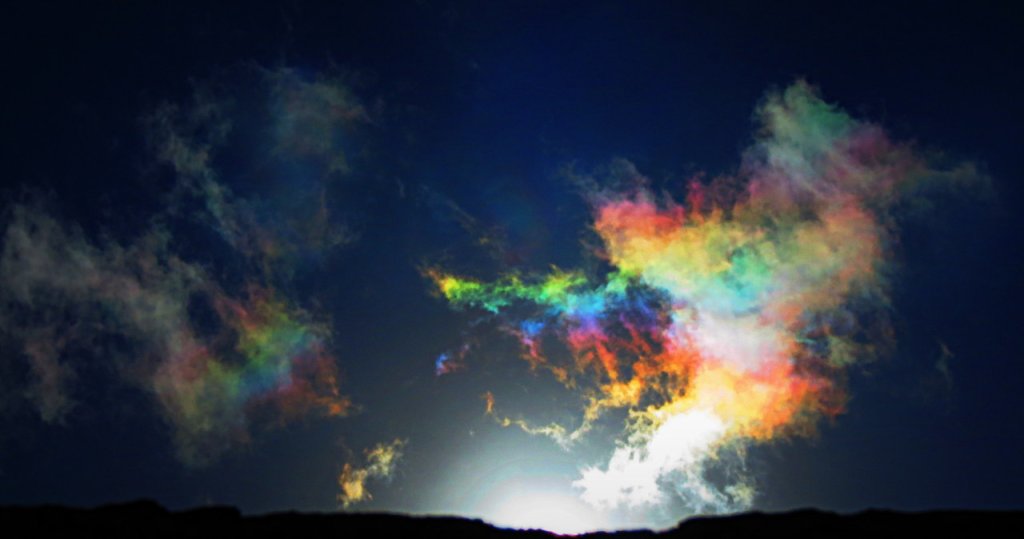
Fire rainbows may be exceedingly rare occurrences. They are also exceedingly stunning. These phenomena are actually clouds that have been (figuratively) set aflame. The clouds display such fantastic colors because of water droplets that happen to be nearly uniform in size. As a result, the clouds refract light in a similar manner. Notably, this can only occur when the Sun is higher than 58° above the horizon, and it generally occurs when light is passing through cirrus clouds, in particular. As National Geographic notes, “When light enters through a vertical side face of such an ice crystal and leaves from the bottom face, it refracts, or bends, in the same way that light passes through a prism. If a cirrus’s crystals are aligned just right, the whole cloud lights up in a spectrum of colors.”

More properly, this event should be called a circumhorizon arc. As Atmospheric Optics notes, “it is a very large halo and always parallel to the horizon. Often only fragments are visible where there happen to be cirrus clouds – the individual patches of cirrus are then lit with colour that can be mistaken for iridescence. High sun infralateral arcs occupy a similar position in the sky. The infralateral arc curves upwards from the horizon slightly and this is best checked for visually because lens distortions invariably also show the circumhorizon arc as curved.”
The halo is low at European latitudes and only visible for a week or so around the summer solstice, making their appearances very rare at these locals. However, things are a little different in the USA as the circumhorizon arc is higher in the sky and, as a result, is visible for a much longer period in the summer and for each day. While a complete arc (it’s huge!)

Watch: Fire Rainbows in Idaho

Note: Fire Rainbows should not be confused with iridescent clouds, as the process that forms them is a little different.

